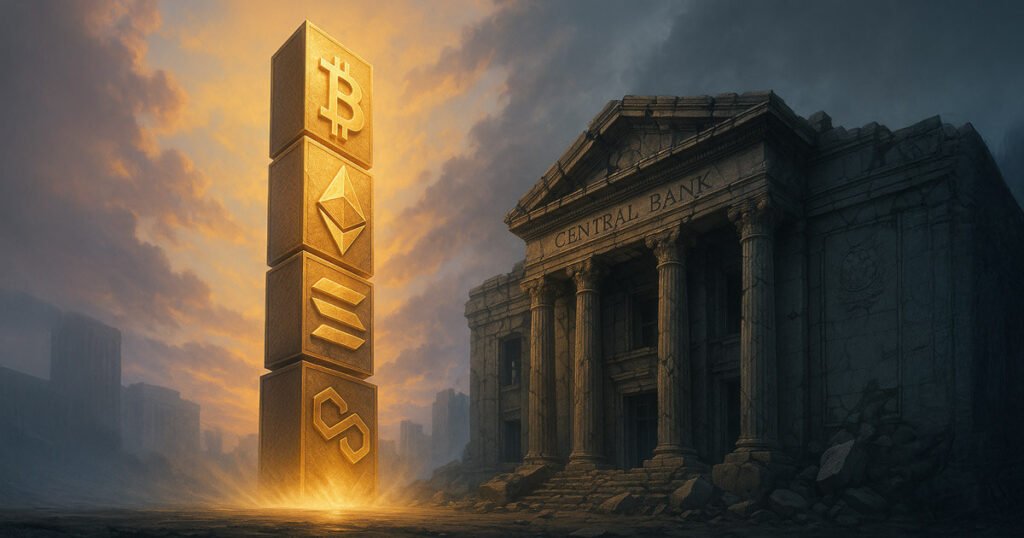The Real Meaning of Decentralization in Crypto: A Deep Dive
Decentralization has become a buzzword in the cryptocurrency space, often touted as the cornerstone of innovation. However, it’s crucial to delve deeper into the true implications of this term, particularly in light of the original vision presented in Satoshi Nakamoto’s 2008 Bitcoin white paper. Contrary to popular belief, the white paper does not mention "decentralization" explicitly; it outlines a peer-to-peer system designed to substitute institutional trust with publicly verifiable cryptographic proofs. Understanding this distinction is vital, as it highlights a crucial aspect of the crypto conversation that has often been overlooked or misconstrued.
The Misconception of Decentralization
When former SEC director William Hinman suggested in 2018 that a token might escape securities law once its network was "sufficiently decentralized," a shift in perspective occurred. Node-counting became a confounding measure of compliance, and many projects used this ambiguous metric to claim immunity from regulatory scrutiny. This has resulted in a misrepresentation of what decentralization actually means, creating an illusion of a democratic structure that ultimately reinforces traditional hierarchical systems. Insiders still control valuable resources, while outsiders are left providing liquidity without adequate access to the underlying decision-making processes.
Rearranging Power Structures
The significance of crypto lies not in the elimination of power structures, but in how these structures are rearranged. Three key elements differentiate blockchain technology from the traditional financial system: self-custody, global settlement, and programmable finance. The ability to safeguard assets without intermediaries, conduct instantaneous transactions across borders, and utilize smart contracts demonstrates that the blockchain ecosystem empowers users in unique ways, even if power dynamics remain skewed. The essential links connecting these capabilities are proofs and verifiability, which instill trust not through node count but through demonstrated ownership and control.
Transparency in Power Dynamics
While cryptography cannot eradicate hierarchy, it can illuminate power structures and provide mechanisms for oversight. Hierarchical privileges in blockchain networks, such as those held by miners and validators, may be easier to detect and audit, thereby allowing users to navigate around potential abuses. This necessitates a focus on addressing concrete choke points where power can centralize. By promoting transparency and enabling users to verify states readily, crypto can challenge existing power dynamics, making it easier for individuals to migrate to alternative protocols should the need arise.
Rethinking the Narrative
The narrative of decentralization needs reevaluation. It is often portrayed as a destination—a final dispersal of power—but in reality, power dynamics are fluid and adaptive. The critical question at hand is whether these structures remain susceptible to challenge. By this new metric, the progress of crypto should be measured by the ease with which privilege can be exposed and contested, rather than the rhetoric surrounding decentralization. This principle applies even to decentralized AI projects, underscoring the complexity of power in digital landscapes.
The Promise of Pluralism
In essence, the enduring promise of cryptocurrency lies in its potential for pluralism. The objective should be to consistently compress the discretionary power held by gatekeepers, ensuring that users always have the option to exit on their own terms. Failing to achieve this could lead to a scenario where crypto merely becomes a new layer within an existing power structure, ultimately reducing its revolutionary potential. The challenge is not to achieve a state of perfect decentralization but to maintain an environment where privilege is always contestable and transparency prevails.
Conclusion
The discussion surrounding decentralization in crypto transcends mere terminology; it explores the intricate relationships of trust, power, and governance in our digital world. By redefining our understanding of decentralization to focus on transparency and the ability to challenge authority, we can preserve the core ideals of what cryptocurrency represents. The mission to create a more equitable digital marketplace continues, and it hinges on our ability to critically examine and refine our approach to power dynamics within the blockchain ecosystem.

















